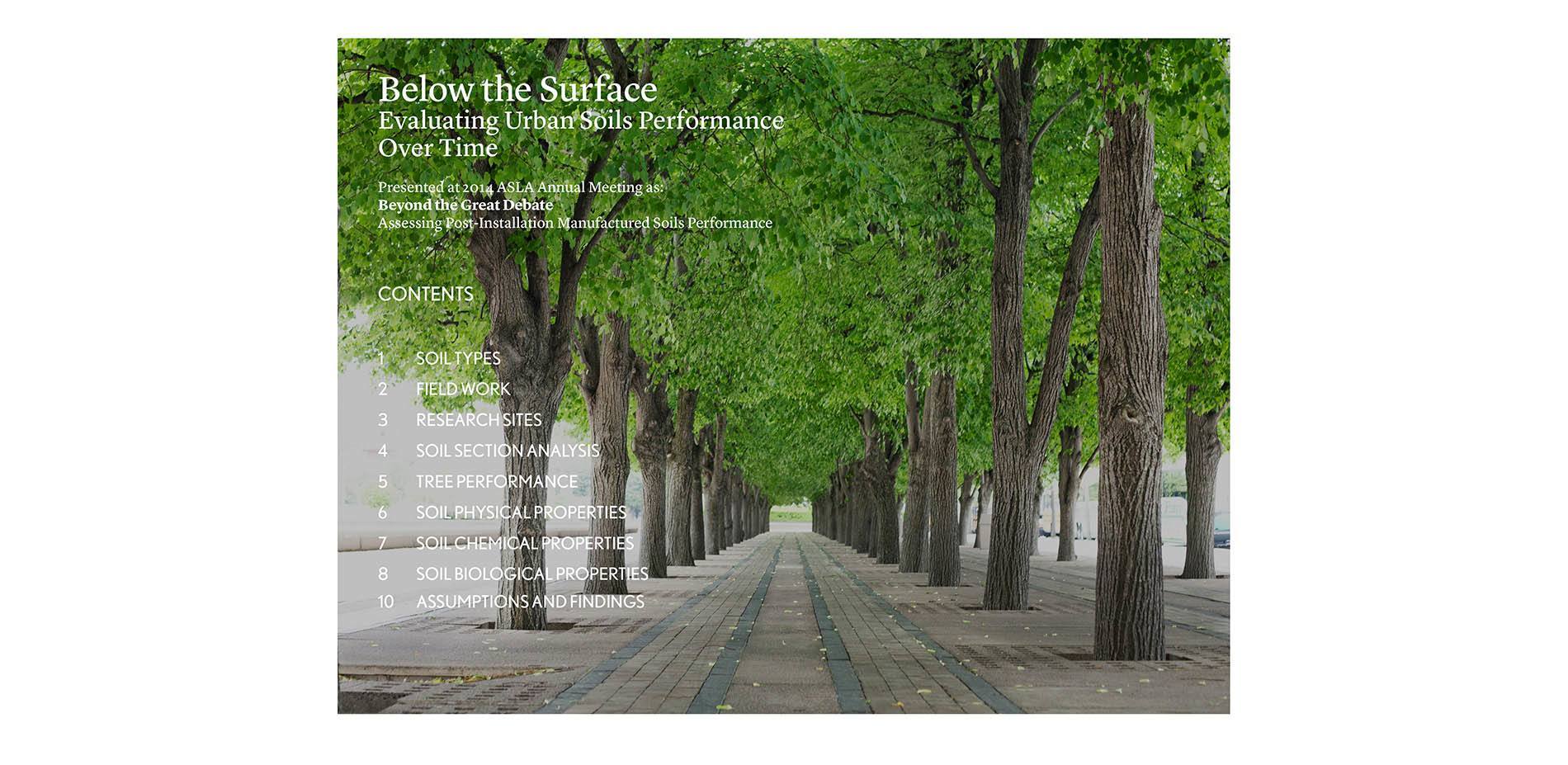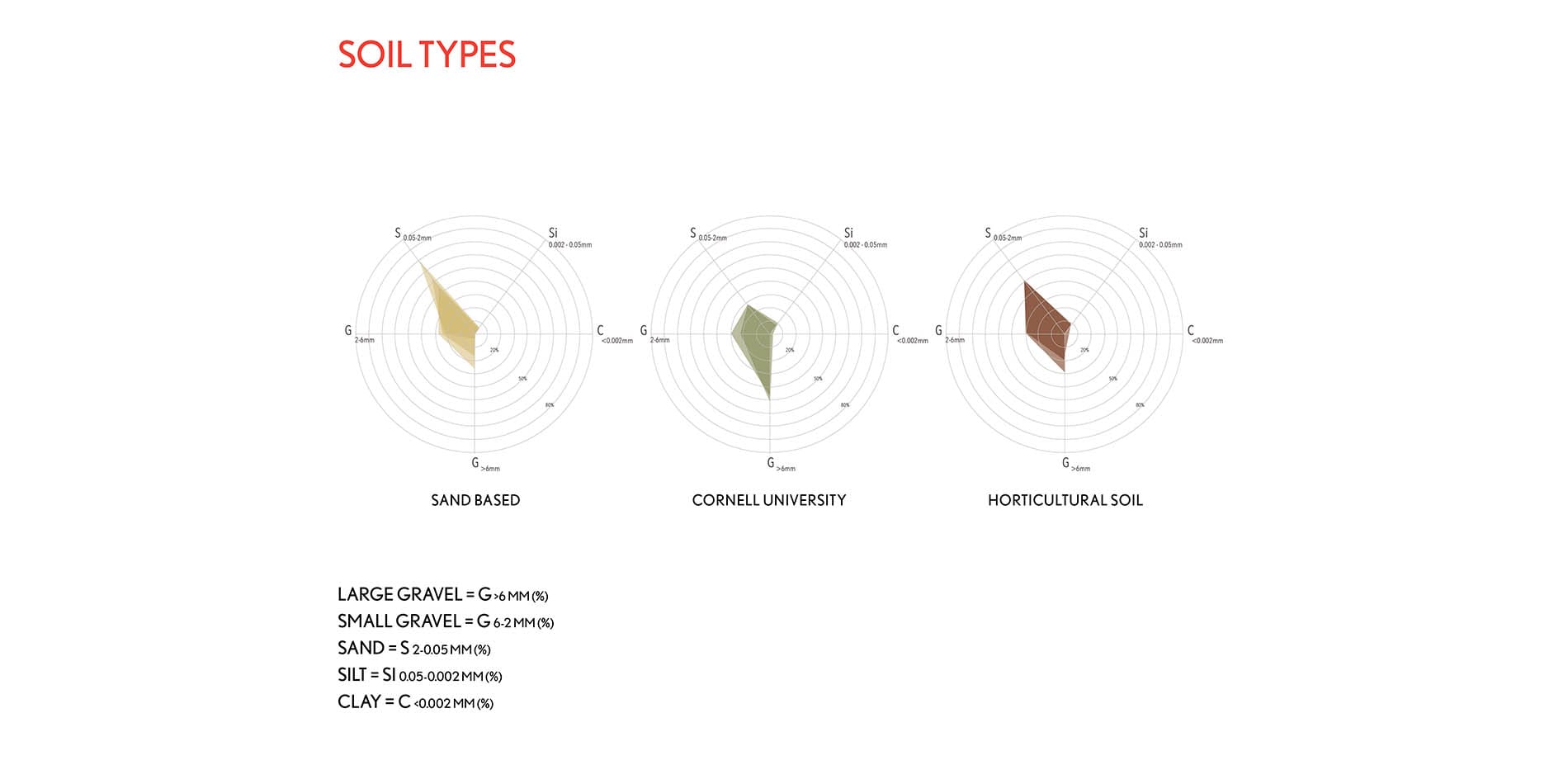
Table of Contents
Photo Credit: James Ewing Photography
Media: Please submit high-resolution image requests to images@asla.org.

We developed a revised “soil triangle to compare each soil sample while representing the high gravel content in manufactured soils.
Photo Credit: James Ewing Photography
Media: Please submit high-resolution image requests to images@asla.org.
We spent three intensive days at sites assessing tree performances, and taking soil cores under pavements.
Photo Credit: James Ewing Photography
Media: Please submit high-resolution image requests to images@asla.org.
These seven sites represent the three soil types, as well as very different ages and growing conditions.
Photo Credit: James Ewing Photography
Media: Please submit high-resolution image requests to images@asla.org.
We developed a comprehensive data sheet documenting design intent and the gathered data for each research site (1 of 8 drawings illustrating design detailing and constructed soil profile).
Photo Credit: James Ewing Photography
Media: Please submit high-resolution image requests to images@asla.org.
Designed soil sections seen against our findings suggest soil maturation. The rendering technique combines USGS soil texture legends and USDA soil color profiles published in 1935.
Photo Credit: James Ewing Photography
Media: Please submit high-resolution image requests to images@asla.org.
Tree core analysis shows variable growth rates controlled to planting date.
Photo Credit: James Ewing Photography
Media: Please submit high-resolution image requests to images@asla.org.
Growth rates were correlated against soil types and planting condition.
Photo Credit: James Ewing Photography
Media: Please submit high-resolution image requests to images@asla.org.
We developed a series of comparative studies related to the physical properties of the soils, including soil texture mapped to profile depth (1 of 4 drawings analyzing physical properties of soils).
Photo Credit: James Ewing Photography
Media: Please submit high-resolution image requests to images@asla.org.
Chemical Analysing: electrical conductivity as a measure of salts in the soils (1 of 2 drawings analysis chemical properties of soils).
Photo Credit: James Ewing Photography
Media: Please submit high-resolution image requests to images@asla.org.
Biological Analysis: microbial activity and moisture correlated to organic matter content (1 of 3 drawings analyzing biological properties of soils).
Photo Credit: James Ewing Photography
Media: Please submit high-resolution image requests to images@asla.org.
To engage discussion we tested a series of assumptions about urban soils against the findings derived from the data.
Photo Credit: James Ewing Photography
Media: Please submit high-resolution image requests to images@asla.org.
Each assumption related to practical considerations useful to practicing landscape architects considering the use of manufactured soils.
Photo Credit: James Ewing Photography
Media: Please submit high-resolution image requests to images@asla.org.
The findings suggest that soils under pavement are indeed dynamic and evolve and change over time and that maintenance and management of soils is critical to long-term tree health.
Photo Credit: James Ewing Photography
Media: Please submit high-resolution image requests to images@asla.org.
This slide from our presentation illustrates the collected data set from this investigation. We hope this investigation will expand to other sites in other regions, possibly through a distributed model of crowd-sourced data collection.
Photo Credit: James Ewing Photography
Media: Please submit high-resolution image requests to images@asla.org.


















